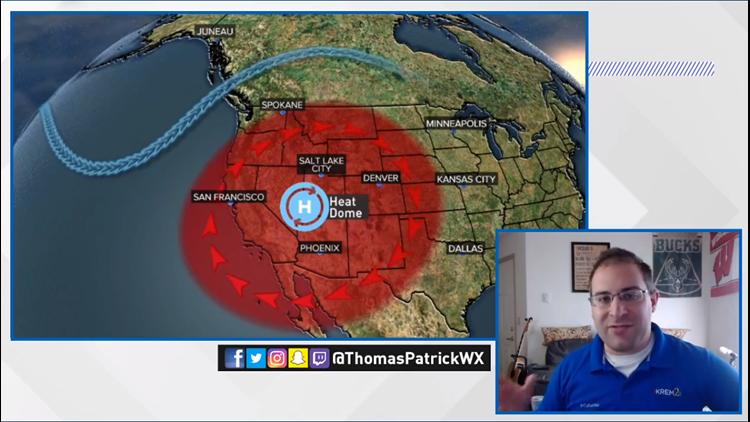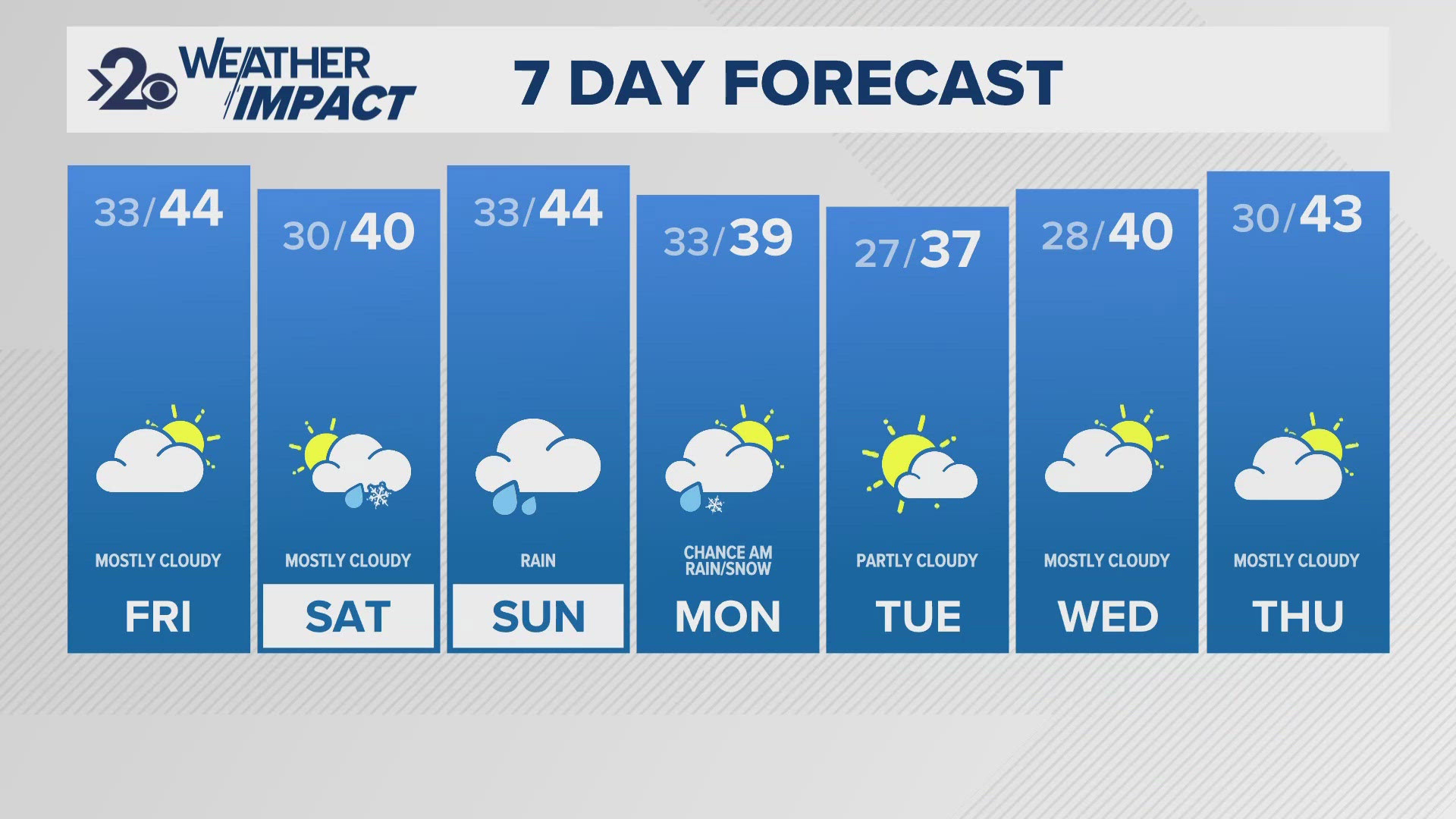SPOKANE, Wash. — Today's weather classroom topic is on heat waves, specially a feature known as a "heat dome" that set records across the western United States during the first half of the week of August 16.
While Spokane hit a record high of 101 degrees on Sunday, Death Valley, CA hit 130 degrees which was a record for the month of August!
A "heat dome" as it is known, is a large, multi-state wide air mass that is characterized by hot and warm temperatures throughout its entirety both length-wise and vertically. It's anchored by a high pressure area, and the higher the pressure, the stronger the heat dome is.
As air warms (and any object for that matter) it expands. Like how on a hot summer day, the tire pressure of your car's tires increases, the same is happening in the atmosphere. But instead of increase the pressure in a fixed volume (like a car tire) the atmosphere holds the same pressure and expands to a larger volume.
This physically lengthens the height of the troposphere, creating a "dome" in 3D space.
These high pressure heat domes are so strong than they start to deflect all other weather systems around them. The jet stream buckles into a ridge feature as it steers around the heat dome. And without the winds of the jet stream and upper atmosphere, heat domes tend to be anchored, or remain in the same place over long periods of time. At least several weeks.
Heat domes are responsible for not just record setting hot temperatures in the summer time, but long-duration heat waves.
Areas like Death Valley, that sit between valleys in the mountains suffer from the hottest temperatures during these heat ways. This is because the stable and sinking air mass, the high pressure provides, causes air to compress and warm as it sinks down.
[Incoming science terms] The process of sinking air that warms is called adiabatic warming and the rate at which it warmest is called a lapse rate, which is 9.8 degrees Celsius per one kilometre.
Since Death Valley sits at an elevation of 282 feet below sea level, the air has a long way to sink down. The farther it sinks, the hotter it get. Hence why Death Valley is among some of the hottest places on plant Earth.
This "hottest where it's lower" principle also applies to the Columbia Basin in Washington. Compared to downtown Spokane, at an elevation of 1,900', Moses Lake is at 1,070', and Kennewick is at 407' elevation. This is why the lower Columbia basin is hotter than Spokane on the norm.
Weather Classroom, produced and presented by Meteorologist Thomas Patrick, airs at 1 pm Pacific Time every Thursday on his Facebook channel.



